Understanding Specialized Pediatric Diagnostic Testing
Specialized pediatric diagnostic testing forms a cornerstone of modern child healthcare, enabling early detection and intervention for a range of conditions from genetic disorders to neurodevelopmental delays. Tailored specifically to the unique physiological and developmental needs of children, these diagnostic procedures combine advanced technology and child-friendly approaches to ensure accuracy, safety, and better health outcomes. This article explores the benefits, procedures, evaluation options, and latest technological trends in pediatric diagnostics, while emphasizing the critical importance of early detection and interventions, particularly in areas such as autism spectrum disorder (ASD).
Benefits and Importance of Early Detection in Pediatric Healthcare
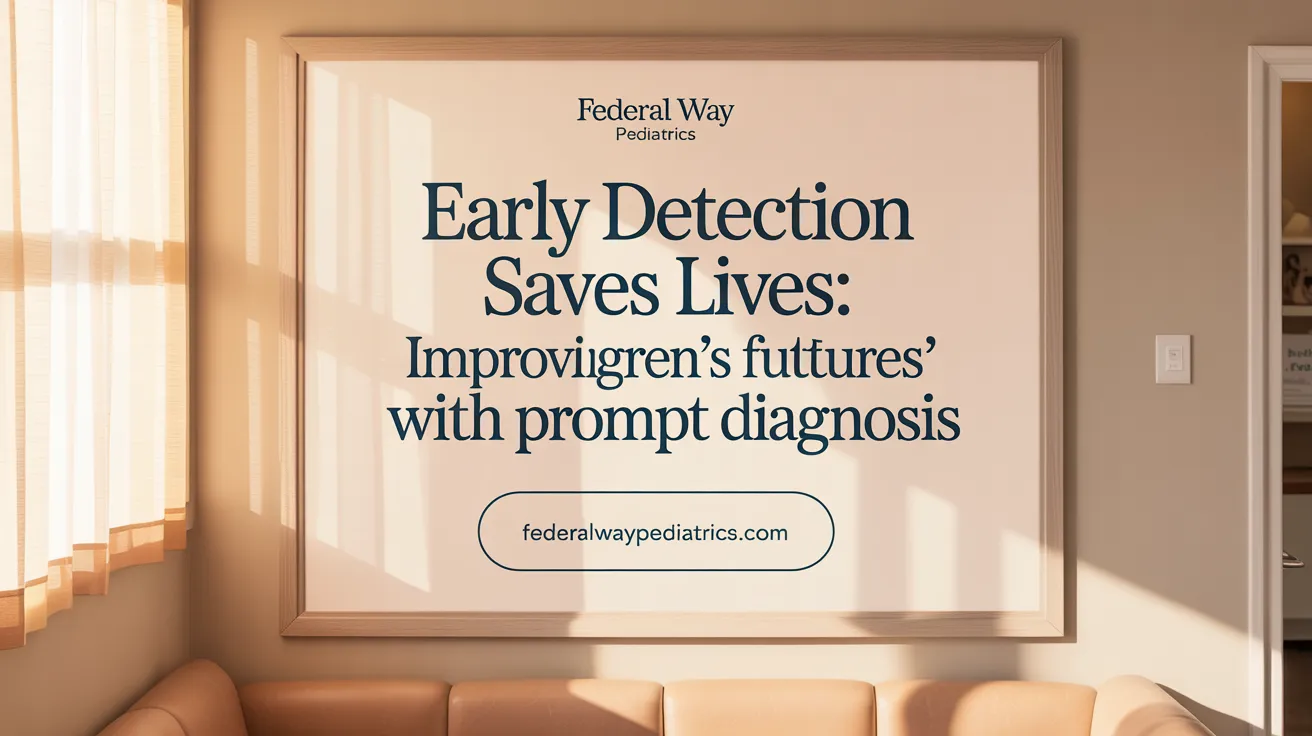
Why is early detection and intervention important in pediatric healthcare?
Early detection and intervention are vital for ensuring healthy development and long-term well-being in children. When healthcare providers identify issues such as speech delays, motor impairments, or genetic disorders early, they can implement treatments that significantly improve outcomes.
Routine developmental screening during regular check-ups allows pediatricians to catch potential problems at their earliest stages. This proactive approach facilitates targeted therapies, like physiotherapy or speech therapy, which can enhance cognitive, motor, and social skills.
Moreover, early diagnosis supports families by providing education and resources to manage their child's condition effectively. In resource-limited settings, simple screening practices like monitoring milestones can help prevent long-term disabilities. Overall, timely identification and treatment can reduce the severity of disabilities, improve quality of life, and set the foundation for a healthier future.
What are the benefits of pediatric diagnostic testing?
Pediatric diagnostic tests play a crucial role in detecting health issues early and guiding effective treatment. These tests include genetic screenings for hereditary conditions, developmental assessments for delays, and imaging studies such as MRI and ultrasound. Early detection through these tools enables families and healthcare providers to initiate interventions promptly.
Screenings can reveal abnormalities in motor skills, language, or social behavior, facilitating early therapies that support healthy growth and learning. For example, newborn pulse oximetry screening can identify congenital heart defects with high specificity, allowing for early management. Genetic testing helps diagnose inherited disorders, enabling personalized treatments.
Regular diagnostic testing during well-child visits also supports comprehensive healthcare, addressing emotional, behavioral, and physical needs holistically. Overall, pediatric diagnostic testing enhances the chances of better health outcomes by catching issues before they escalate.
What scientific and clinical evidence supports pediatric diagnostic testing?
Research consistently demonstrates the value of pediatric diagnostic testing in improving long-term health outcomes. Evidence from clinical studies shows that early detection of conditions like autism, genetic diseases, and metabolic disorders leads to more effective interventions.
Advances in technology, such as next-generation sequencing and improved imaging, have expanded diagnostic capabilities, offering accurate, less invasive options. For instance, comprehensive screening programs have been successful in early identification of congenital anomalies, reducing associated morbidity.
However, some challenges remain, such as ensuring age-appropriate validation of tests and addressing disparities in access. Rigorous scientific evaluation, ongoing innovation, and investment are essential to optimize diagnostic accuracy and expand availability. These efforts support a future where early, precise diagnosis becomes standard in pediatric care, ultimately improving health trajectories for countless children.
Common Specialized Pediatric Diagnostic Testing Procedures and Evaluations
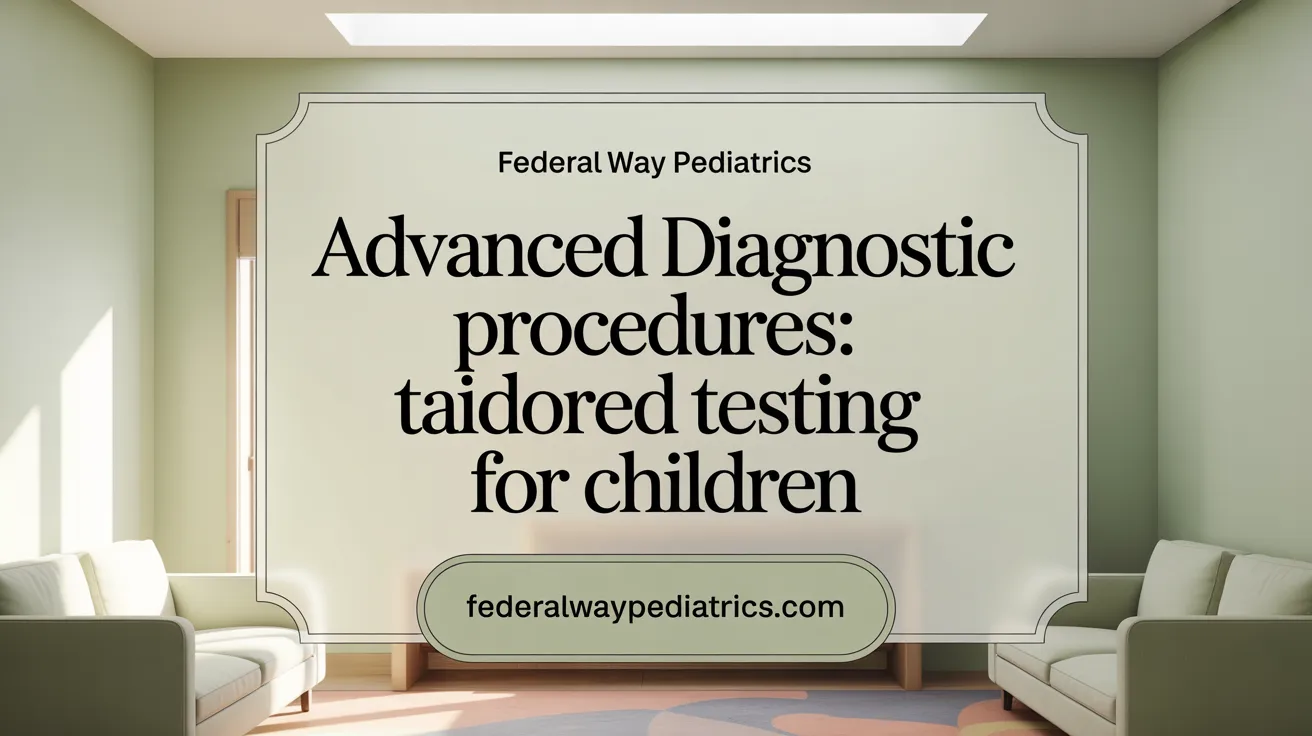
What are the common specialized pediatric diagnostic testing procedures?
Children undergo a variety of advanced tests designed to accurately diagnose health and developmental issues while keeping their comfort in mind. Many of these tests are non-invasive, utilizing technology like MRI and CT scans to visualize internal structures with precision. Ultrasound and fluoroscopy are also commonly used for internal assessments, especially of the abdomen and joints.
Genetic testing, allergen skin tests, hearing assessments, and vision evaluations help identify allergies, sensory impairments, or genetic conditions. Blood and urine analyses provide additional insights into metabolic, infectious, or systemic diseases.
Cardiac evaluations such as echocardiography, Holter monitoring, and pulse oximetry are crucial for assessing heart health, detecting congenital or acquired heart issues. Neurological assessments, including EEG and neuroimaging, support diagnoses of neurological delays, epilepsy, or autism spectrum disorder.
These procedures are tailored for children, often performed in specially equipped facilities with child-friendly environments and trained staff. This approach ensures safety, reduces anxiety, and enhances cooperation. Overall, these diagnostic tools enable early detection of health and developmental concerns, paving the way for effective treatment and intervention.
What diagnostic evaluation options are available for children?
Comprehensive diagnostic evaluations are performed by multidisciplinary teams involving physicians, psychologists, and specialists trained in pediatric care. These evaluations include behavioral assessments, neuropsychological testing, developmental screenings, and standardized evaluations to explore cognitive, emotional, and behavioral health.
Parents and caregivers are integral to the process, providing detailed histories and participating in structured interviews and observational activities. These assessments are crucial for diagnosing conditions like autism spectrum disorder, ADHD, learning disabilities, or emotional disorders.
Early and accurate diagnosis enables personalized intervention planning, improving the child's developmental trajectory. Tools such as questionnaires, clinical observations, and developmental checklists are regularly used to gather comprehensive information, supporting timely and targeted care.
How is pediatric diagnostic testing used specifically for autism spectrum disorder (ASD)?
Testing for autism begins with routine developmental screening during well-child visits, usually at 18 and 24 months. Screening questionnaires like the M-CHAT-R/F or SACS-R are administered to parents to identify early signs of ASD, such as delayed speech, social withdrawal, or unusual behaviors.
If screening results indicate a potential concern, children are referred for more detailed evaluations. These involve developmental histories, direct behavioral assessments, and observations based on criteria from the DSM-5. Specialists such as neurodevelopmental pediatricians, psychologists, or neurologists conduct these comprehensive assessments.
Ongoing monitoring allows clinicians to observe changes over time and adjust interventions as needed. Early diagnosis and intervention are vital, leading to improved social, communication, and behavioral outcomes for children with ASD.
| Question | Diagnostic Procedures | Focus Area | Additional Details |
|---|---|---|---|
| Common testing | MRI, CT scans, ultrasound, genetic testing | Physical & genetic health | Visualizing internal structures, identifying genetic conditions |
| Evaluation options | Developmental screenings, behavioral assessments | Developmental & behavioral | Early detection of delays, emotional and learning difficulties |
| ASD-specific testing | Screening questionnaires, detailed behavioral assessments | Autism Spectrum Disorder | Early signs detection and confirmation with specialist evaluation |
This array of diagnostic options underscores the importance of early, comprehensive, and child-centered testing strategies to support pediatric health and development.
Technological Advances and Trends in Pediatric Diagnostics
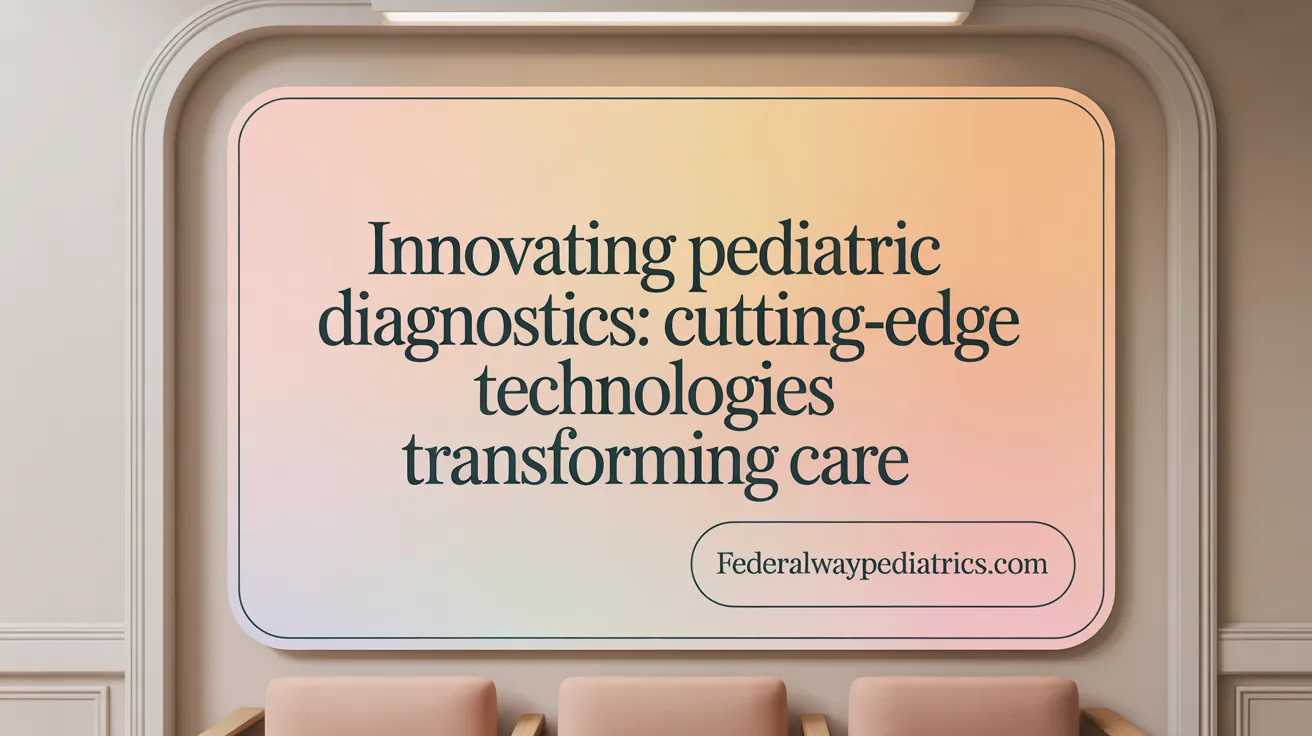
What are the latest technologies and trends in pediatric diagnostics?
Recent developments in pediatric diagnostics are shaping a future where early detection and precise diagnosis become more achievable and less invasive for children. A significant trend involves the use of advanced genetic testing methods, such as chromosomal microarray analysis, exome sequencing, and whole-genome sequencing. These techniques allow clinicians to identify complex genetic disorders with high accuracy, enabling tailored treatment strategies that improve patient outcomes.
In addition to genetics, imaging technologies have seen remarkable progress. MRI scans and low-dose CT scans now provide detailed views of pediatric anatomy and brain functions while minimizing radiation exposure. Portable and point-of-care testing devices are also becoming common, offering quick results in settings outside traditional laboratories, which is particularly beneficial for urgent or routine assessments.
Wearable sensors, wireless monitors, and smart health devices facilitate continuous, real-time tracking of vital signs and physiological parameters. These tools are especially useful for children with chronic illnesses or those in high-risk categories, as they enhance ongoing care without the need for frequent hospital visits.
Artificial intelligence (AI), machine learning, and telemedicine are revolutionizing pediatric diagnostics. AI algorithms improve image analysis, assist in early detection of diseases, and help in predicting disease progression. Telehealth platforms extend specialized diagnostic services to remote or underserved regions, ensuring broader access to high-quality pediatric care.
Together, these innovations are not only increasing diagnostic accuracy but also improving the comfort and experience of pediatric patients. With ongoing technological integration, pediatric healthcare is moving towards a model that is more personalized, accessible, and efficient, ultimately leading to better health outcomes for children.
Safety Standards and Best Practices in Pediatric Diagnostic Testing
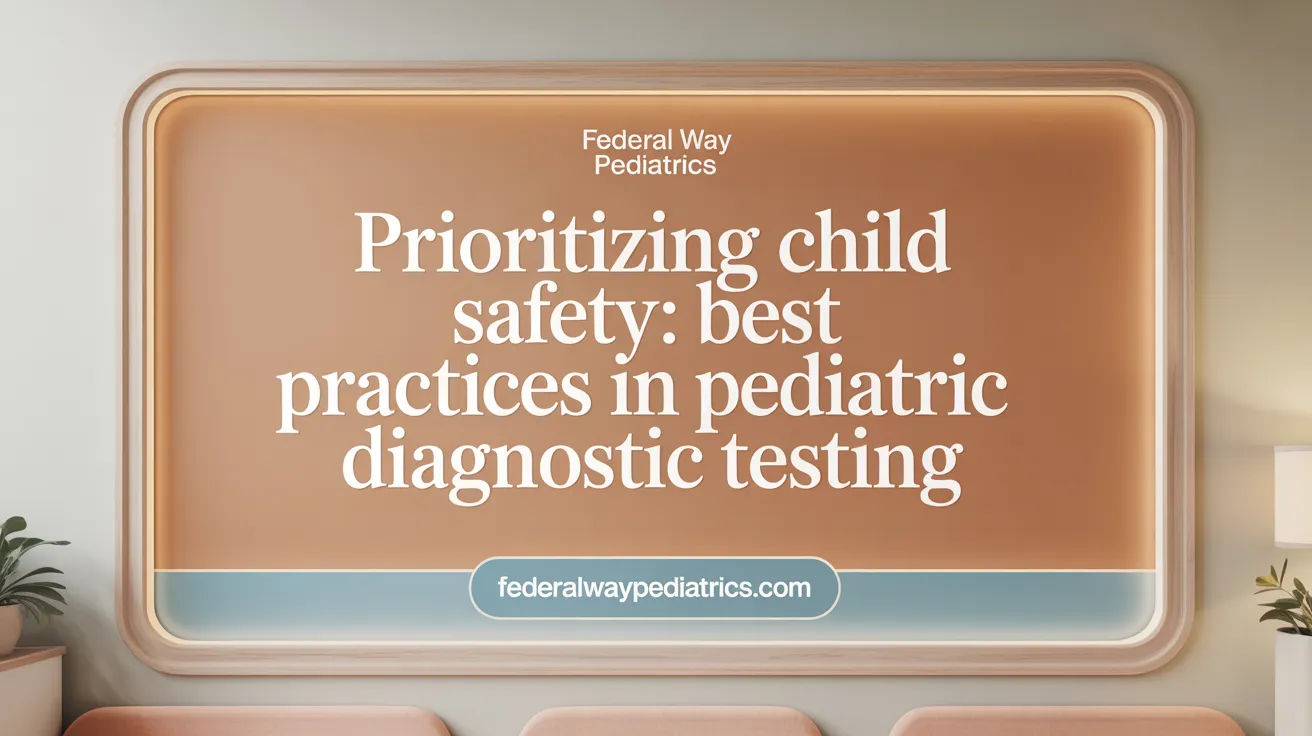
What are the safety considerations, best practices, and standards in pediatric diagnostic testing?
Ensuring safety in pediatric diagnostic testing is essential given children’s unique physical and emotional needs. The process must prioritize minimal invasiveness, appropriate age-specific precautions, and the use of modern technology to prevent errors.
One fundamental aspect is conducting tests within child-centered environments designed to make children feel comfortable. Facilities like Loyola Medicine emphasize creating welcoming spaces where children can undergo procedures with reduced anxiety, addressing concerns about unfamiliar machines, noises, and the clinical setting.
Training of healthcare professionals plays a crucial role. Staff should be skilled in pediatric care, familiar with safe testing protocols, and capable of engaging with children to explain procedures in accessible ways. Standardized procedures, clinical pathways, and adherence to evidence-based guidelines help maintain consistency and safety across different healthcare settings.
Safety measures also involve technological tools like electronic health records integrated with decision support systems, barcode verification processes to prevent misidentification, and checklists to ensure all safety steps are followed. These practices are supported by national safety standards and ongoing safety campaigns that promote transparency and error reporting.
Creating a safety-first culture requires organizational commitment through policies that advocate multidisciplinary teamwork, family involvement, and continuous staff training. Such efforts foster an environment where safety concerns can be promptly addressed, errors are minimized, and quality improvements are ongoing.
In summary, pediatric diagnostic testing must adhere to strict safety standards that include environment, personnel training, technological safeguards, and organizational policies. These collectively shield young patients from harm and enhance the accuracy and reliability of diagnostic results.
Comprehensive Pediatric Diagnostic Services and Child-Friendly Approaches
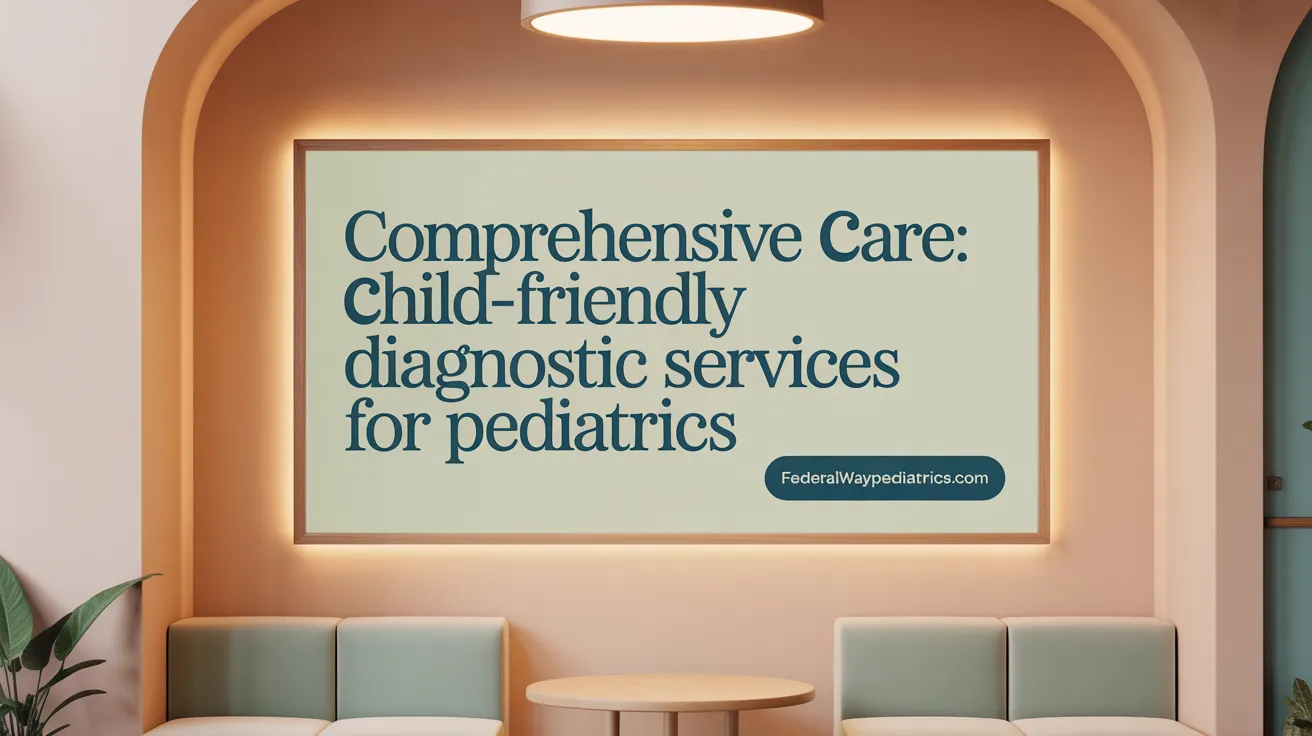
Range of diagnostic tests provided in pediatric care
Loyola Medicine offers a wide array of advanced imaging and diagnostic tests tailored specifically for children. These include allergen skin testing, auditory assessments, autism spectrum evaluations, capsule endoscopy, colonoscopy, and various imaging techniques like CT scans, MRI, ultrasound, and X-ray. Additional tests such as EEG, EMG, fluoroscopy, Pap smears, pelvic exams, and upper endoscopy are available to diagnose diverse health issues in young patients. This comprehensive service enables early detection and precise diagnosis of medical conditions, improving health outcomes.
Child-friendly testing environment and specialized staff
Creating a comfortable setting for children is a top priority. Loyola’s staff is trained to address common concerns about medical machines, noises, and the unfamiliar environment children may encounter during testing. By fostering a welcoming atmosphere, they help reduce anxiety and promote cooperation. Child-friendly devices and digital engagement tools are also employed to make procedures less intimidating, supporting both emotional well-being and accurate results.
Collaborative care models and patient-centric innovations
The facility emphasizes multidisciplinary teamwork involving pediatricians, specialists, and Allied health professionals. This collaborative approach ensures comprehensive care, accurate diagnoses, and tailored treatment plans. Innovations such as telemedicine, remote monitoring, and integrated data analytics with AI enhance diagnostic efficiency and access to care. These advancements support quicker clinical decisions and foster a holistic, patient-centered model of pediatric healthcare.
| Diagnostic Services | Key Procedures and Features | Additional Details |
|---|---|---|
| Imaging Tests | MRI, CT, ultrasound, X-ray; safe and tailored for children | Minimize radiation, improve precision |
| Laboratory and Screening Tests | Blood, urine, genetic testing, developmental screenings | Early detection and personalized care |
| Specialized Assessments | Autism, hearing, allergen testing, psychiatric evaluations | Focus on early diagnosis and intervention |
| Patient-Centric Technologies | Child-friendly devices, interactive tools | Enhance cooperation and decrease stress |
| Care Models | Multidisciplinary teams, telehealth, data analytics | Improve diagnosis accuracy and access |
By combining comprehensive testing options with a supportive environment and innovative care models, Loyola Medicine exemplifies how pediatric diagnostics can be both effective and compassionate.
Advancing Pediatric Health Through Specialized Diagnostic Testing
Specialized pediatric diagnostic testing represents a vital component of contemporary child healthcare, offering the tools and knowledge needed to identify conditions early and personalize treatment plans effectively. Through the integration of cutting-edge technologies such as genetic sequencing, advanced imaging, and AI-driven analytics, alongside child-centric protocols and multidisciplinary collaboration, healthcare providers can optimize outcomes for diverse pediatric conditions including autism and rare genetic disorders. Ensuring rigorous safety standards and adopting innovative, patient-friendly approaches enhance children's diagnostic experiences and promote trust and cooperation. As research continues to illuminate best practices and expand testing capabilities, the commitment to early detection and tailored interventions will remain central to fostering healthier futures for children worldwide.
References
- All Pediatric Diagnostic Tests
- A qualitative study of pediatricians' considerations
- Innovative Pediatric Diagnostics: Customized Solutions for ...
- Screening in Child Health: Studies of the Efficacy and ...
- Pediatric Diagnostic Labs: Specialized Testing for Children
- On Site Lab And Diagnostics: Pediatric Primary Care
- Rigorous and consistent evaluation of diagnostic tests in ...
- Improving Equity & Access to Pediatric Testing
